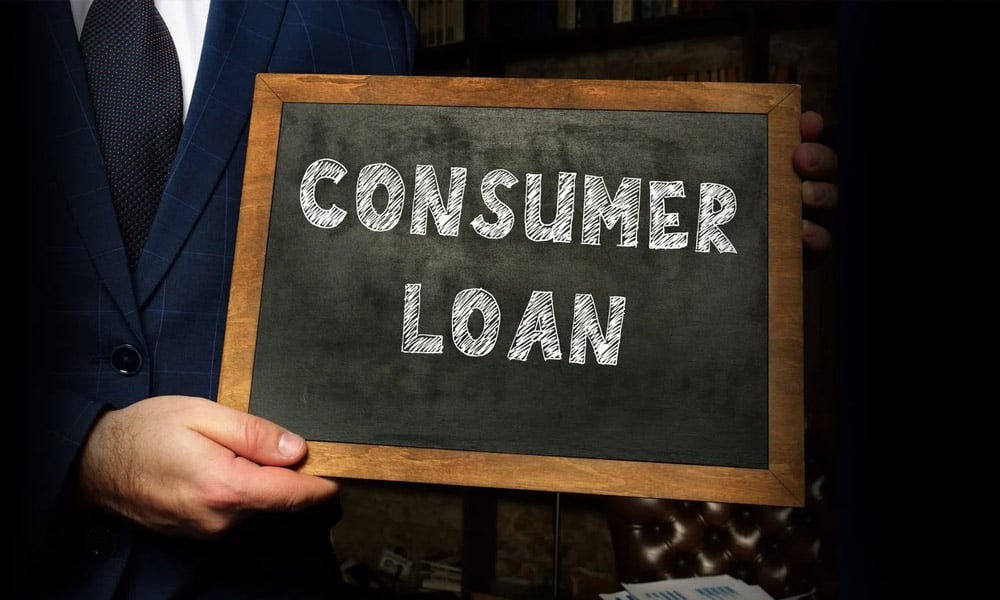Would you like to borrow money but don’t want to use your savings? Loans for consumers might be the way to go. A consumer loan lets you take money from a lender to pay for something important. Here are some things you should know about consumer loans and the difference between secured and uninsured loans before you start. We will talk about the two main kinds of consumer loans and how they work in this piece so that you can make an informed choice.
What is a Consumer Loan?
A consumer loan is a loan given to an individual that can be used for business, personal, or family needs. Personal loans, home loans, auto loans, school loans, and credit card accounts are all common types of consumer loans. Lenders, banks, and credit unions offer many types of consumer loans with different annual percentage rates (APRs) and lengths of time to pay them back. Secured loans need collateral to back up the loan amount, while unsecured loans only look at how creditworthy the user is. Some lenders also offer subsidized loans, which might have a cheaper interest rate or a longer payback term than other types of consumer loans.
An evaluation of the borrower’s finances is part of the application process for a consumer loan to see if they can afford to return the loan amount over the agreed-upon payback time. Depending on the terms and conditions of the loan, there may also be an initial fee or a penalty for paying it off early. payback terms usually last between a few months and a few years. Shorter payback terms usually mean higher monthly payments but lower total costs because interest builds up over time.
Being aware of what a consumer loan is can assist you in making smart choices when it comes to getting money for important purchases or costs. Before signing anything, make sure you carefully consider all of your choices, including any payment plans that the seller may offer. This way, you can choose the best option for your needs and budget.
You can get the money you need for purchases or costs with a consumer loan. Just make sure you do your research and make an informed choice before signing any papers. We’ll talk about how to choose the best choice for your needs now that you know more about consumer loans.

Understanding Consumer Loans
People who want to buy something or pay for unexpected costs can benefit from consumer loans. Learn about the different kinds of consumer loans, their terms and conditions, and how they fit into your budget. This will help you make a smart choice when you need to borrow money.
A personal loan is the most popular type of consumer loan. It usually has a set interest rate and an amount of time to pay it back. You can use these loans for a lot of different things, like paying off debt, home improvements, medical bills, and more. Mortgage loans are another common type of consumer loan that helps people buy homes. People usually get auto loans to pay for the buy of a car or another vehicle. In order to pay for college, student loans can be very helpful. Lastly, credit accounts offer lines of credit that let you borrow money at lower interest rates and with more open payment choices compared to other types of consumer loans.
If you’re thinking about getting a consumer loan, you should compare your budget to all the factors, such as the interest rate and length of time you have to pay back the loan. This way, you can choose the best choice for your needs. Now that you know these things, you’ll be able to choose wisely when it’s time to apply for a consumer loan!
In general, consumer loans can be a great way to buy something big or pay for unexpected costs. You can choose the loan that best fits your needs if you do your study and know about all the different options. Now that you know what a consumer loan is, let’s look at how secured and unsecured consumer loans are different!
Secured vs. Unsecured Consumer Loans
There are two kinds of loans that banks offer: guaranteed and uninsured. For protected loans, you have to put up collateral as proof that you will pay them back. Unsecured loans, on the other hand, are not backed by collateral. There are a lot of different financial choices from both, but the terms and conditions are very different.
Because the investor doesn’t have to take on as much risk with a protected loan, the APR is generally cheaper than for an uninsured loan. People who get these kinds of loans usually have longer periods of time to pay them back and can borrow more money. For protected consumer loans, the application process is usually longer because lenders need to look at the value of any collateral that is given.
Unsecured consumer loans, like credit card accounts or personal loans from credit unions, usually have shorter terms for paying them back and lower loan amounts than secured goods. Because of the higher danger that comes with this type of loan, the interest rates will also be higher. These kinds of loans, on the other hand, are usually easy to get and don’t require a lot of papers.
In conclusion, guaranteed and uninsured consumer loans both give people a variety of ways to get the money they need to buy something or pay for an unexpected cost. Before you ask for an open-end loan, you should think about your budget and compare all the factors, such as interest rates and payback terms. This will help you choose the best choice for your needs.
1. Open-end loan
The open-end loan is a type of unprotected personal loan that lets people use the money for anything they want. It works much like a credit card in the sense that, after making a minimum payment, the borrower can continue to use the available balance over and over again. The amount of credit available increases as payments are made on time, while late or missed payments can cause the lender to reduce the total credit limit. When it comes to repayment fees, open-end loans typically do not require a fixed monthly payment but may come with interest rates and annual fees attached. Open-end loans are great for household purposes and can help build your credit score over time when used responsibly.
2. Closed-end loan
A closed-end loan, commonly referred to as an installment loan, is a type of consumer loan used to purchase specific items. It requires the borrower to make periodical payments until the full amount is repaid. Closed-end loans are typically secured by collateral, such as a home or car so that if a borrower is unable to pay their installment amounts, the lender can seize the asset used as collateral. Closed-end loans can be used for a wide range of purposes and may come with lower interest rates than open-end loans. Additionally, they often have shorter repayment periods compared to other types of consumer loans. While applying for a closed-end loan requires the completion of an application process, borrowers must also consider annual percentage rates and repayment periods when researching which type of loan best suits their needs.

Conclusion
When deciding on the type of consumer loan that best suits your needs Se Finanza sin post om søk forbrukslån, it is important to consider a range of factors including the type of loan made, the amount you need to borrow, the length of time you will be borrowing for, and any potential repayment fees. It is also important to research lenders and their requirements, such as financial institutions, credit unions, or even credit card accounts. Secured loans typically come with lower interest rates than unsecured loans, but you must remember that this will involve placing some type of collateral on the loan. Lines of credit are also a viable option for someone who needs access to funds for household purposes or business purposes over an extended period. Ultimately, understanding all types of consumer loans available and researching which one best meets your needs will help you make an informed decision when choosing a loan.

